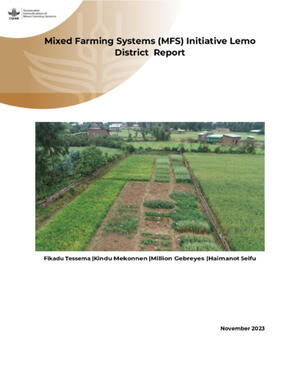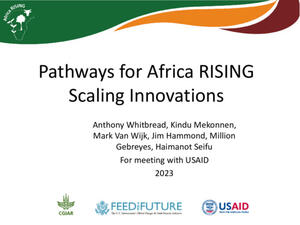
Farming system patterns: Cluster analysis from a Humidtropics baseline survey in Western Kenya
At this week’s international conference on Integrated Systems Research for Sustainable Intensification in Smallholder Agriculture, Randall Ritzema presented a poster on behalf of colleagues about farming system patterns – a cluster analysis from the Humidtropics baseline survey in Western Kenya.
The strategic research team SRT 1.2 within Humidtropics was mandated to conduct baseline surveys and typology analyses for action sites. Such a survey was conducted at the western Kenya site in Kisumu and Vihiga counties between May and August 2014 to better characterize farming systems, determine typologies and identify entry points for Humidtropics interventions.
A total of 400 households randomly selected from 20 sub-locations were interviewed, collecting data from male and female household members separately with a tablet-based implementation of the ImpactLite household questionnaire. The multiple variables captured in this baseline survey, including cropping patterns, livestock systems and indicators for value-chain integration, income, wealth and nutrition, provide a wide scope for determining variation and similarities amongst the studied households.
Cluster analysis is used to define relevant and useful household groups based on the most efficient combination of variables considered in this analysis. Further, these groups are plotted by their geographical locations, indicating their geographical dispersion and allowing for investigating their correlation with other geographic indicators. Results from this analysis will considerably improve the opportunities for targeting Humidtropics interventions through a better understanding of farming systems in the target areas, in particular through patterns of income sources, market orientation and farming activities. They will also provide the basis for ex-ante assessments of proposed interventions, for instance through simulation modelling approaches.
Finally, the typologies identified through this approach will allow for a fruitful discussion with other collaborators within Humidtropics, involved in generating typologies by other approaches.
The co-authors are Nils Teufel, Esther Kihoro, Collins Adoyo, Carlos Quiros, Jane Poole, Mark van Wijk, Aziz Karimov (all ILRI)
More about the conference:















